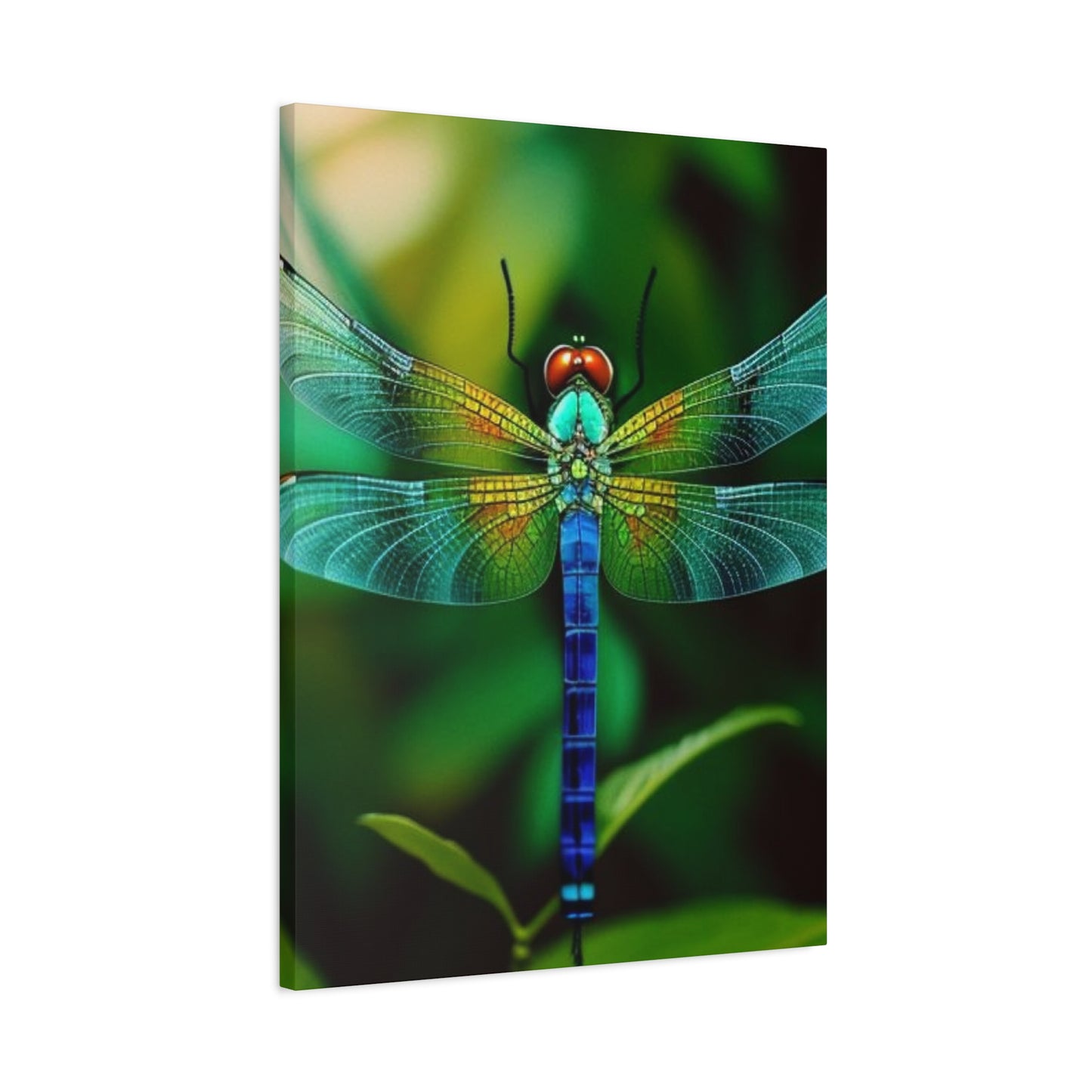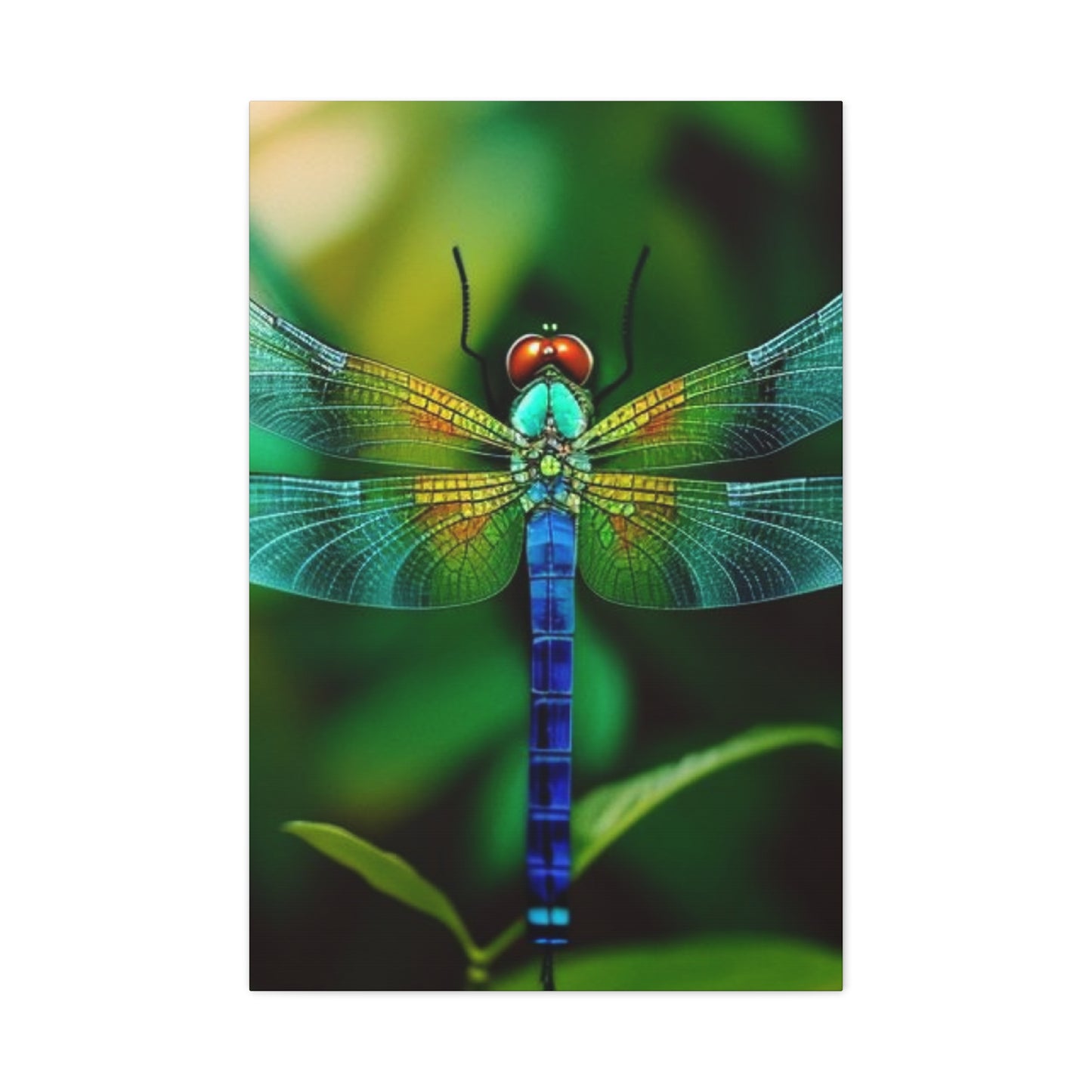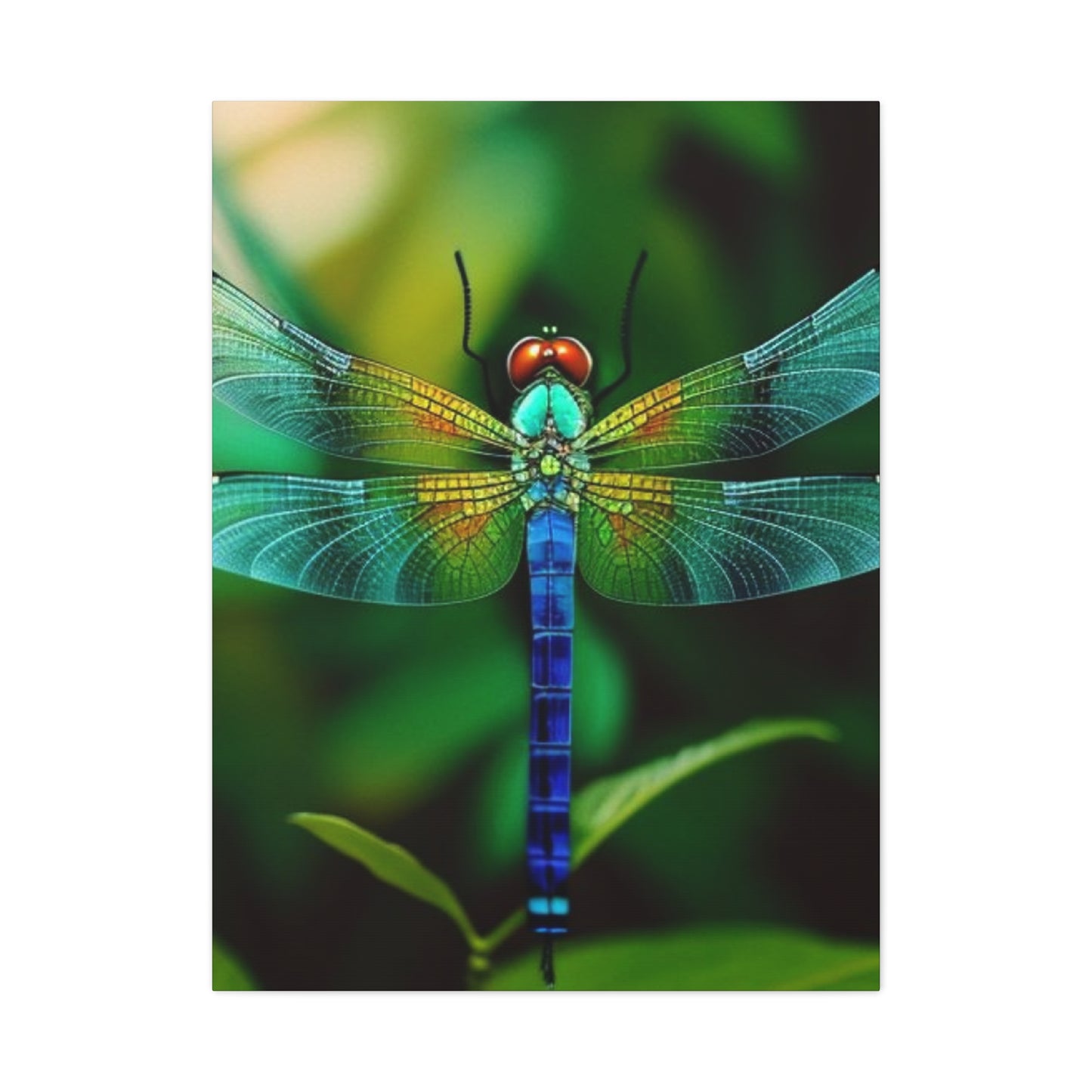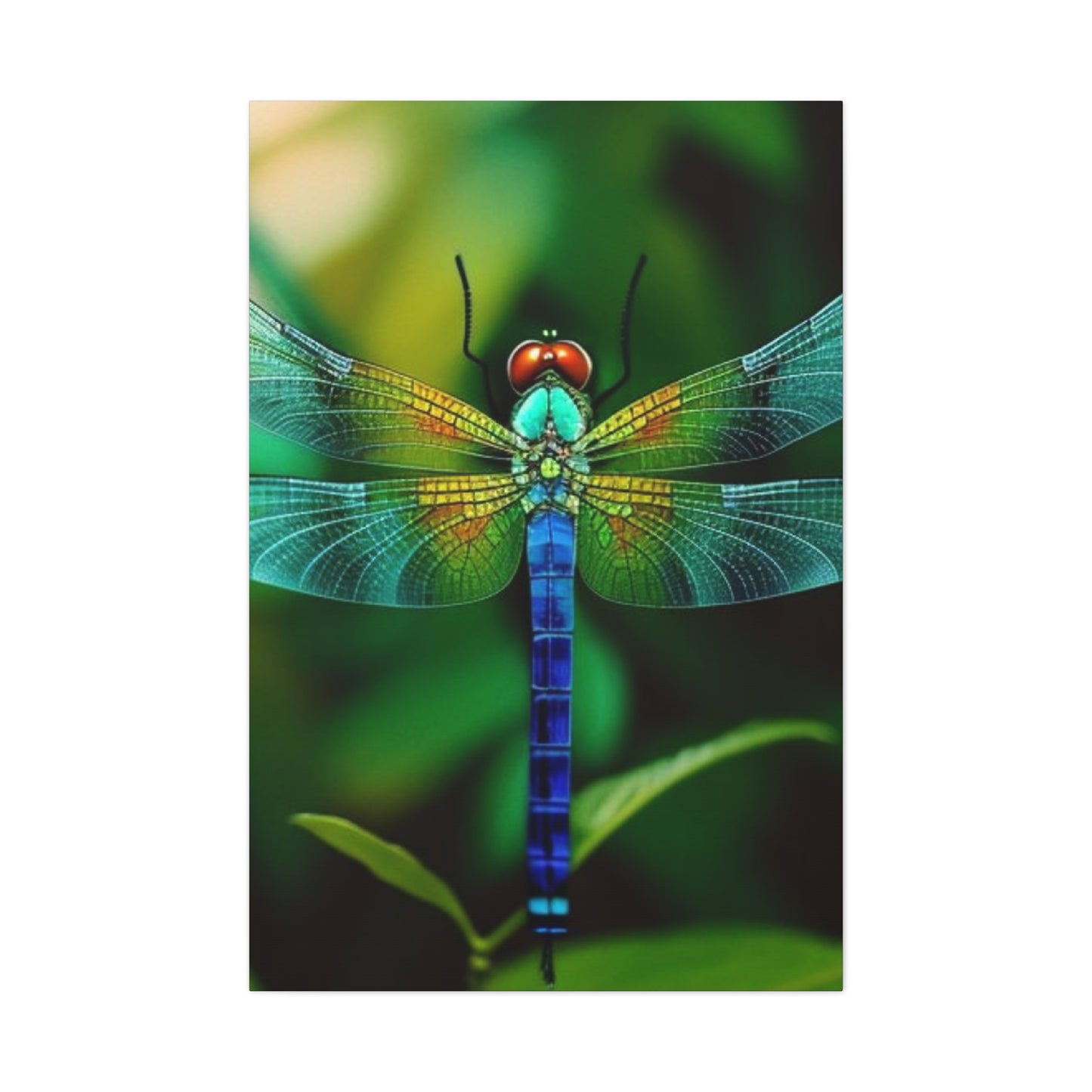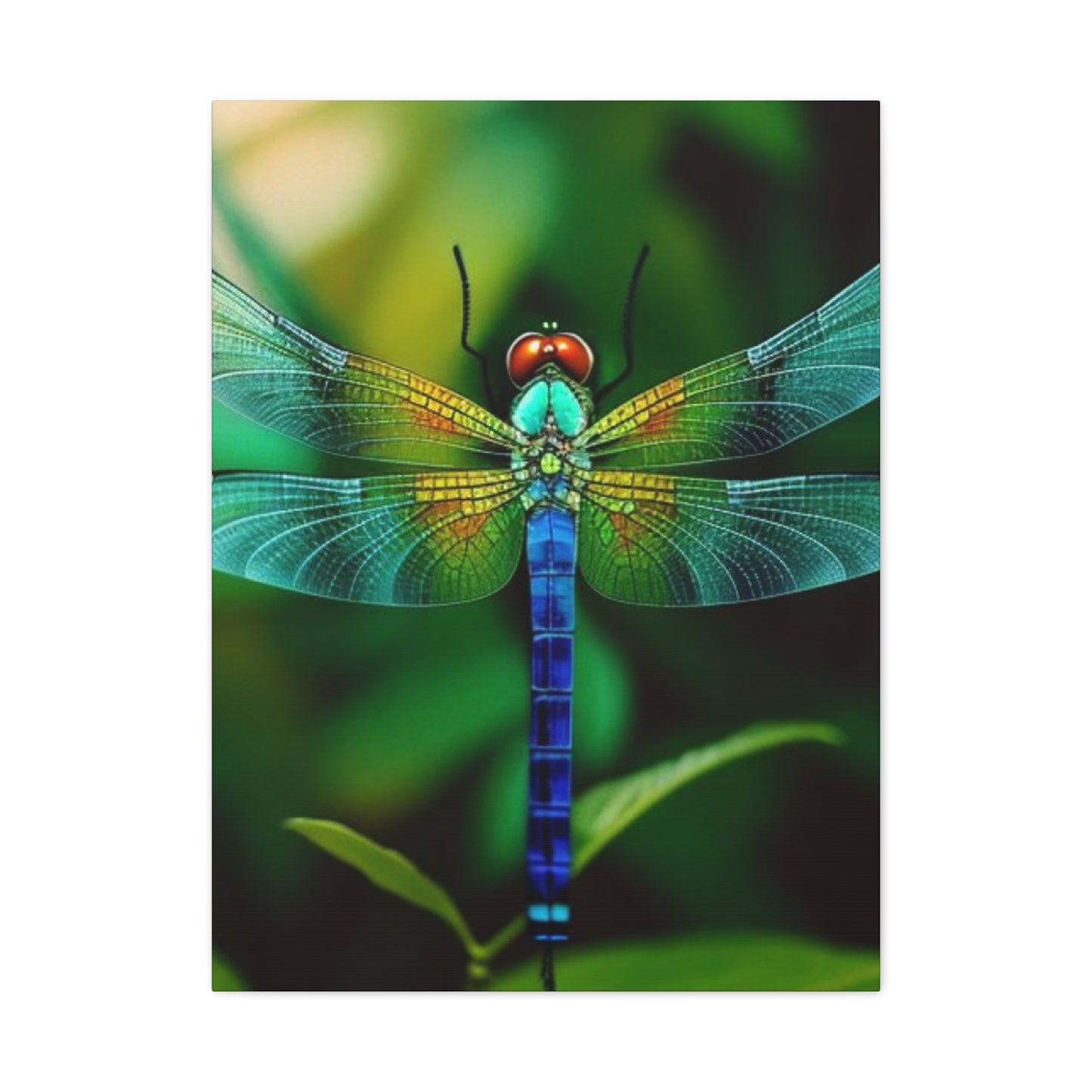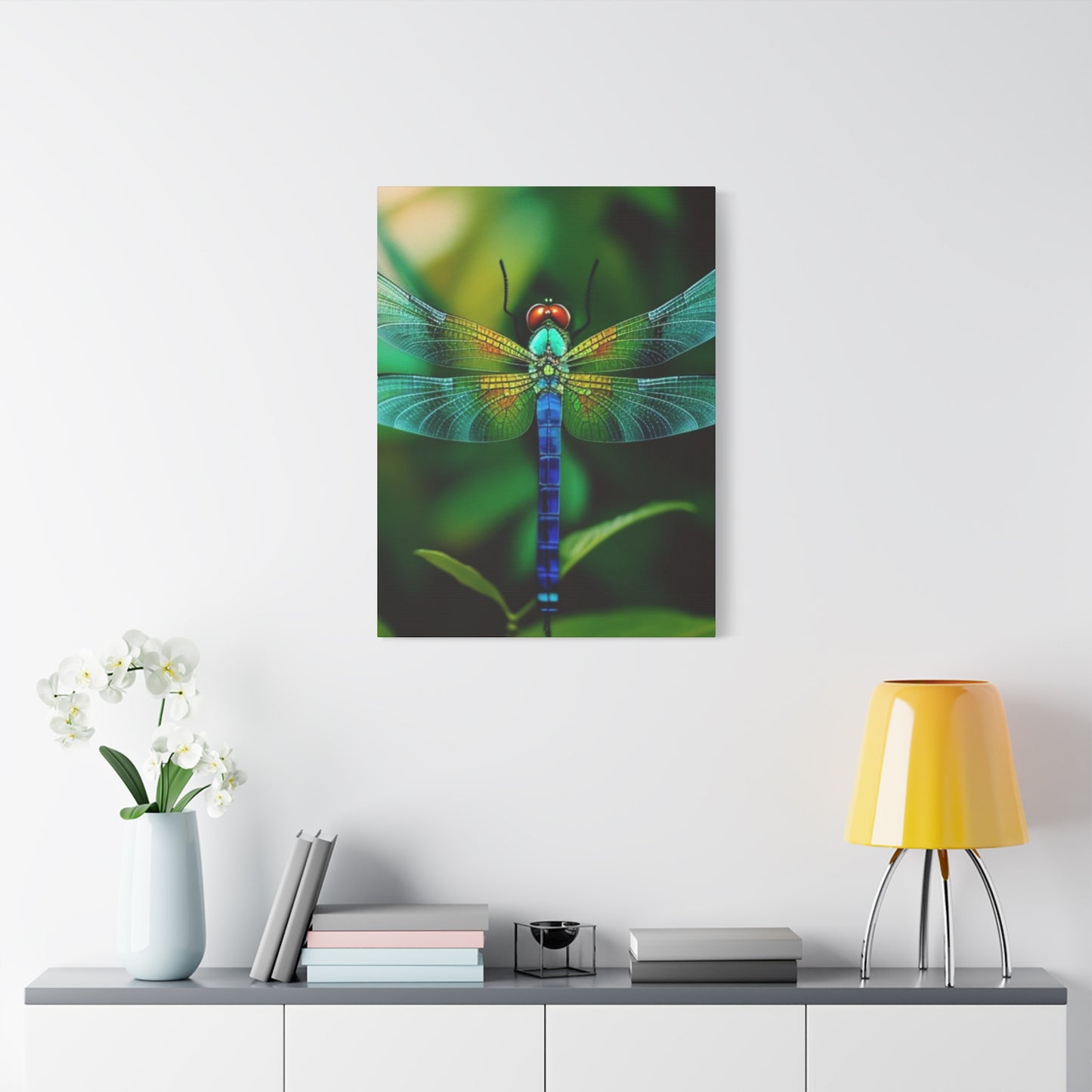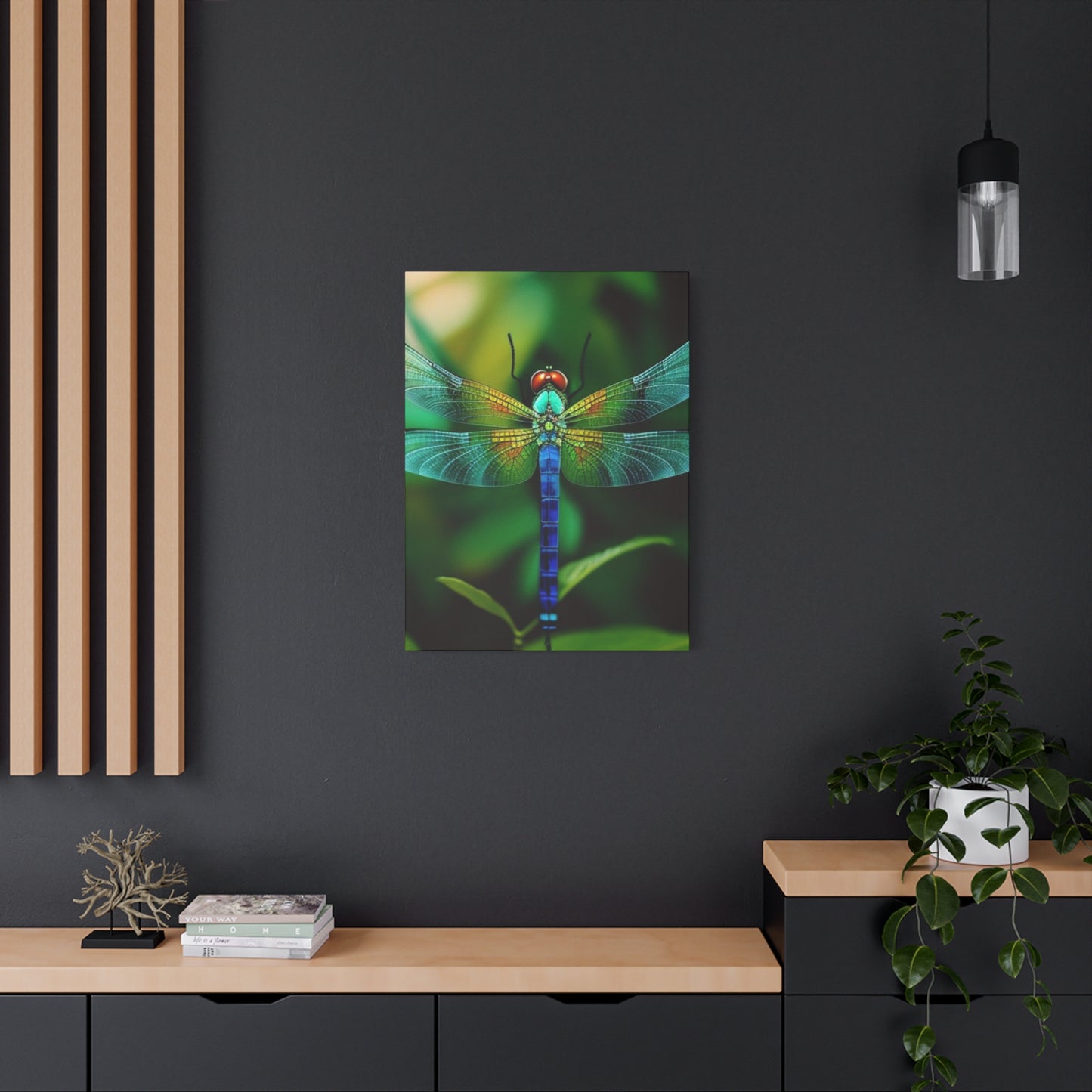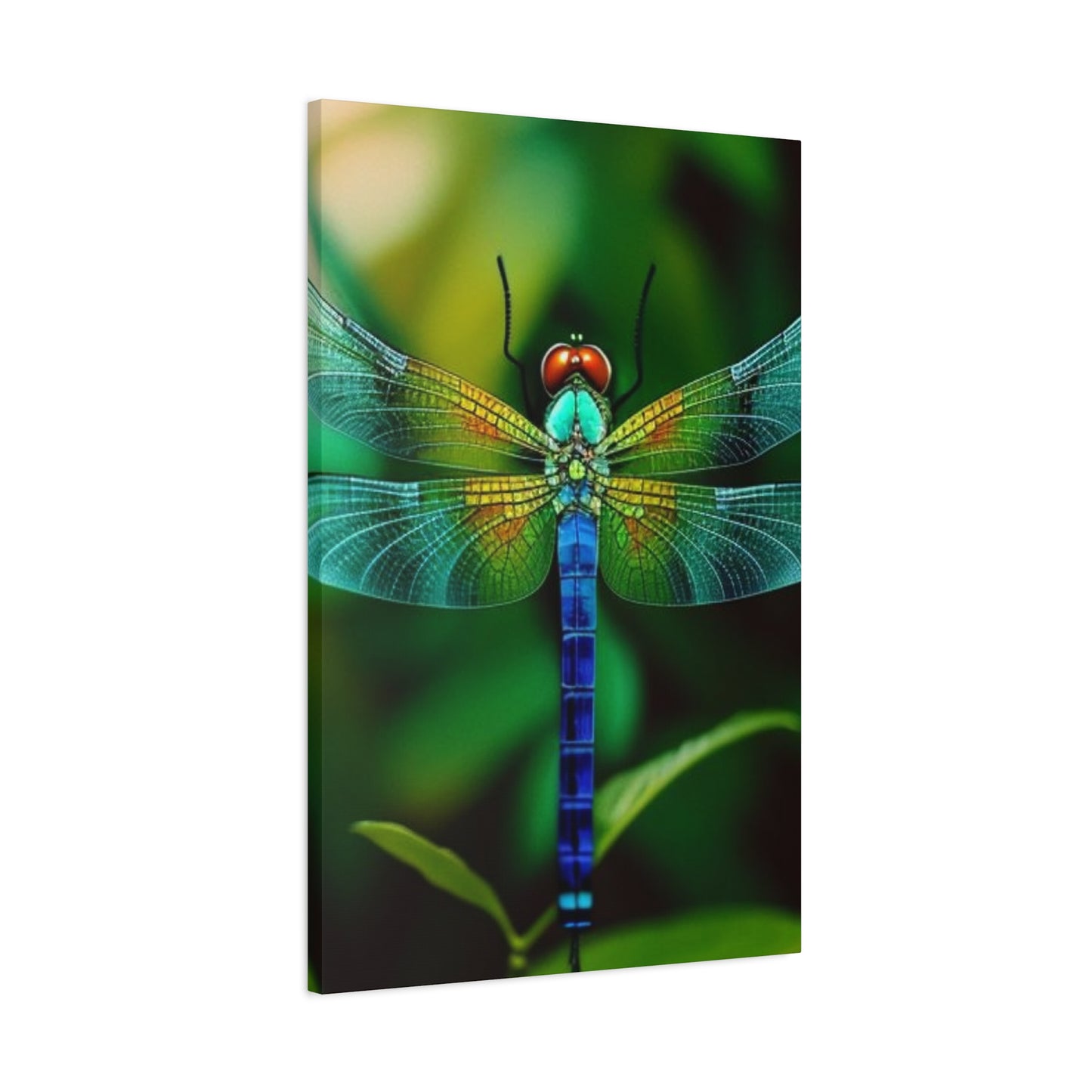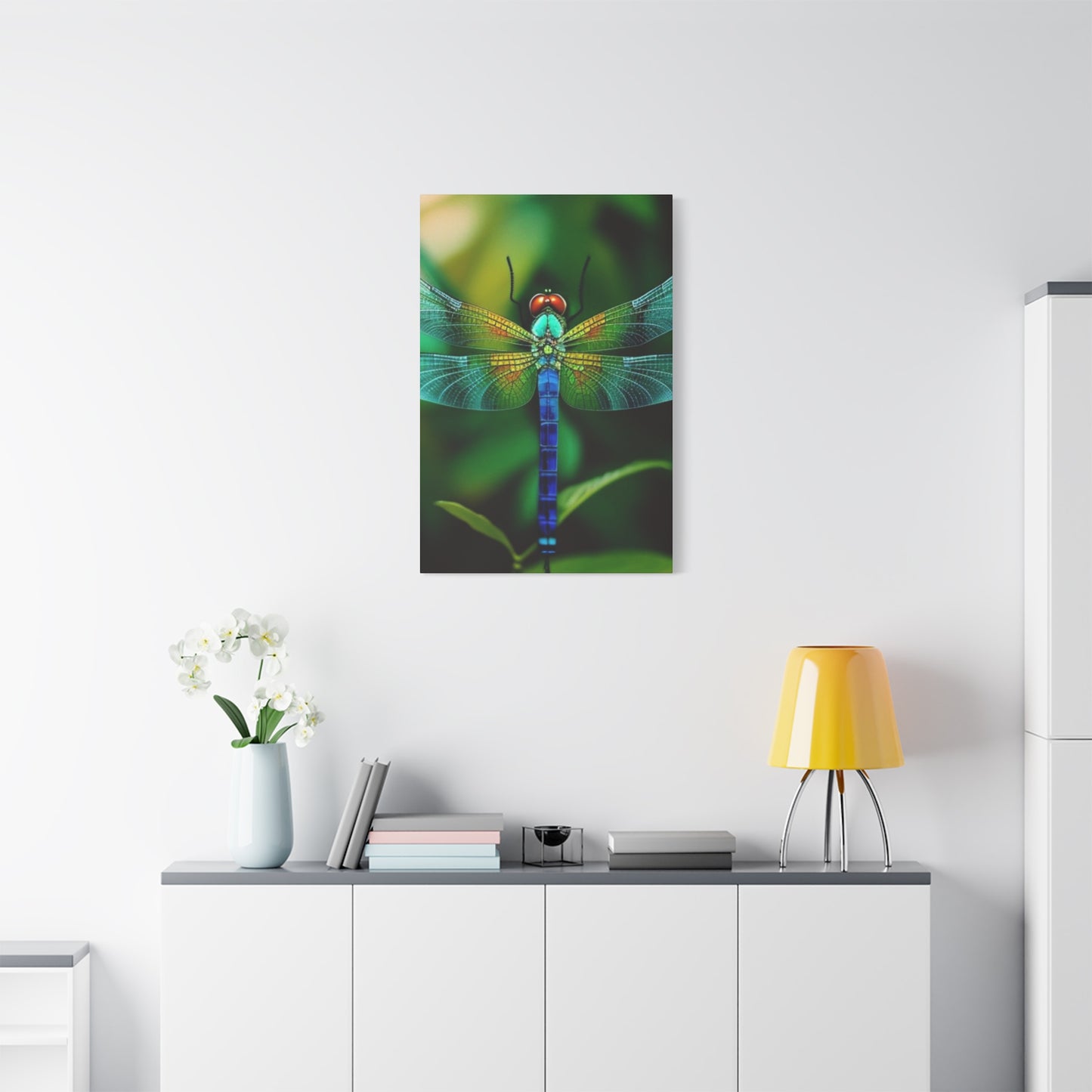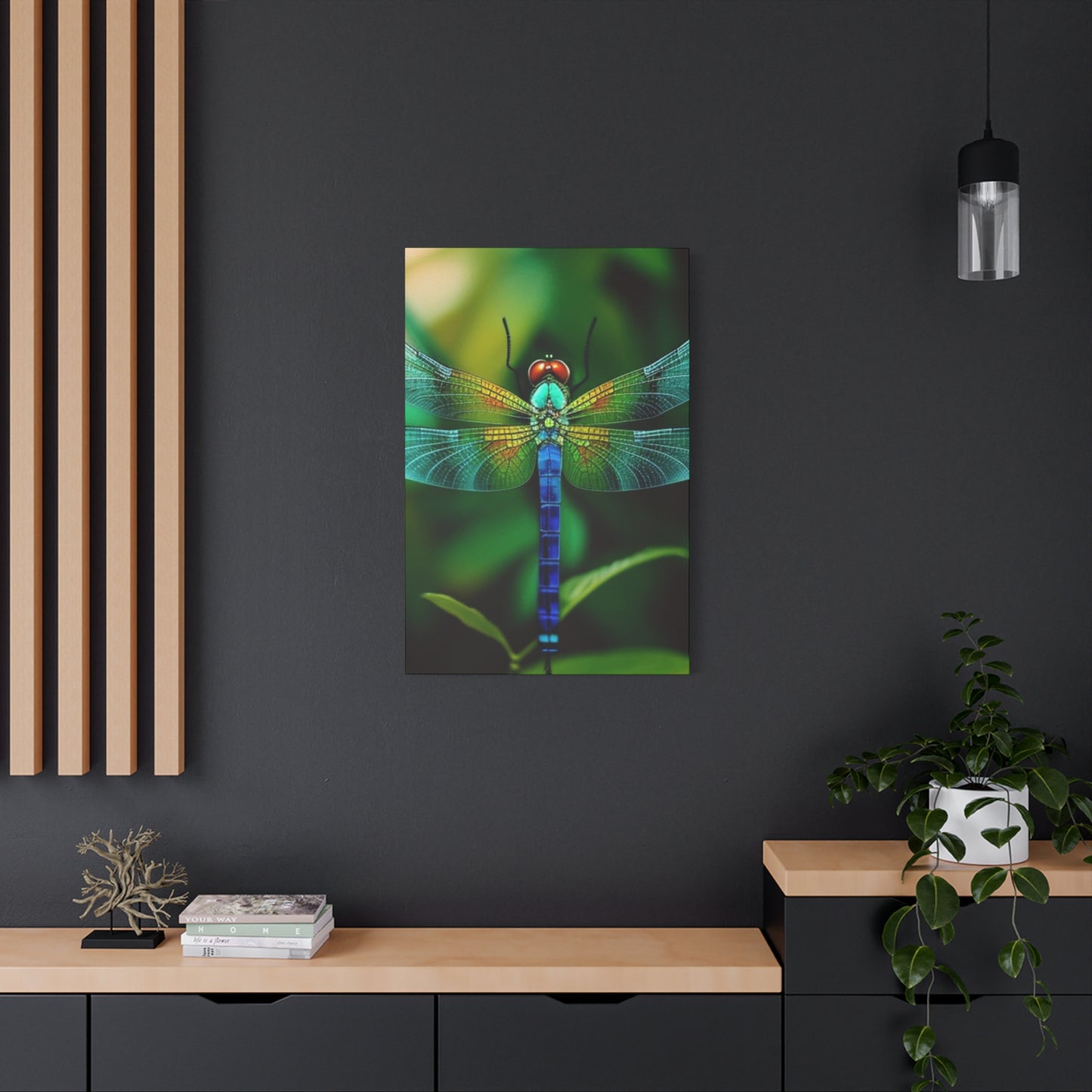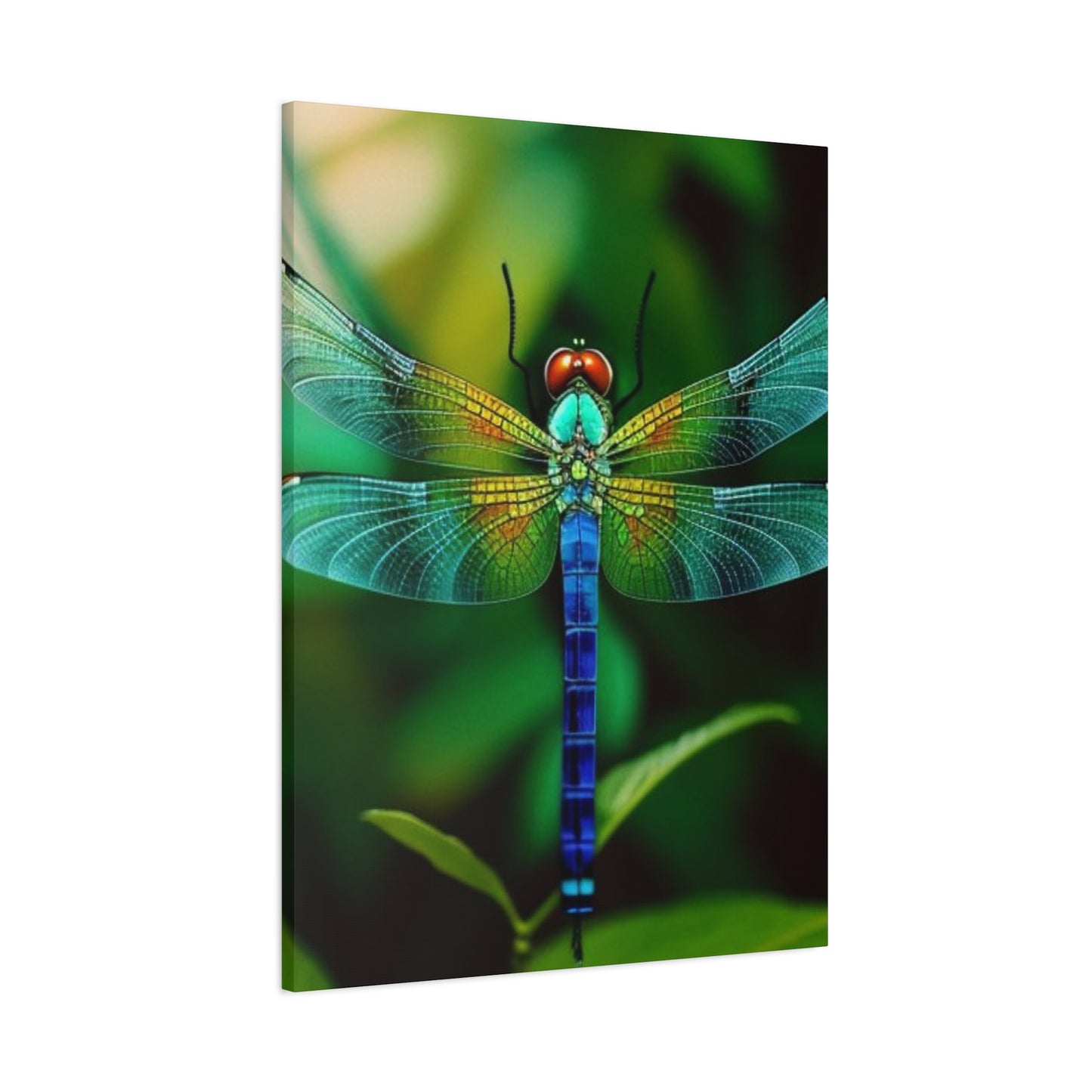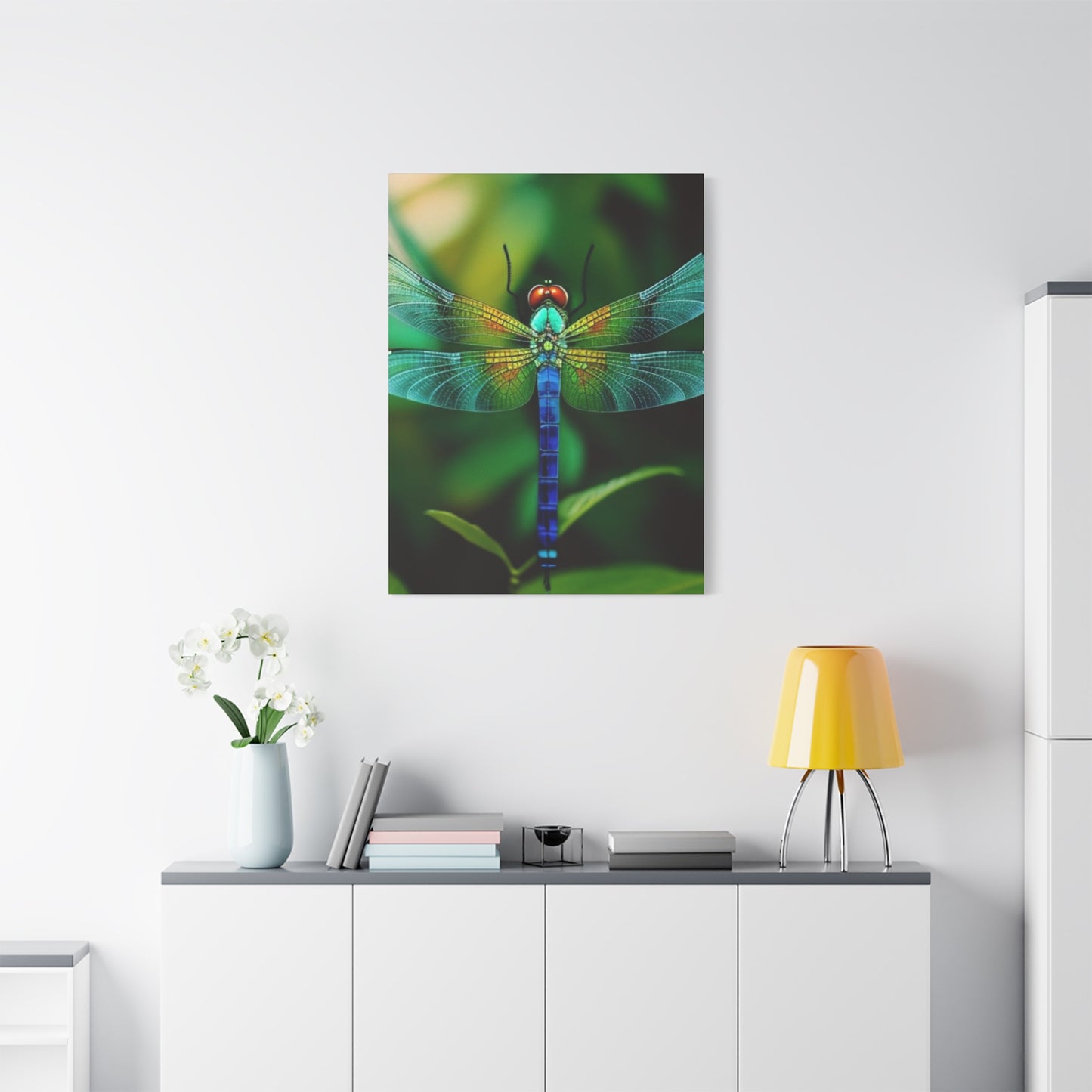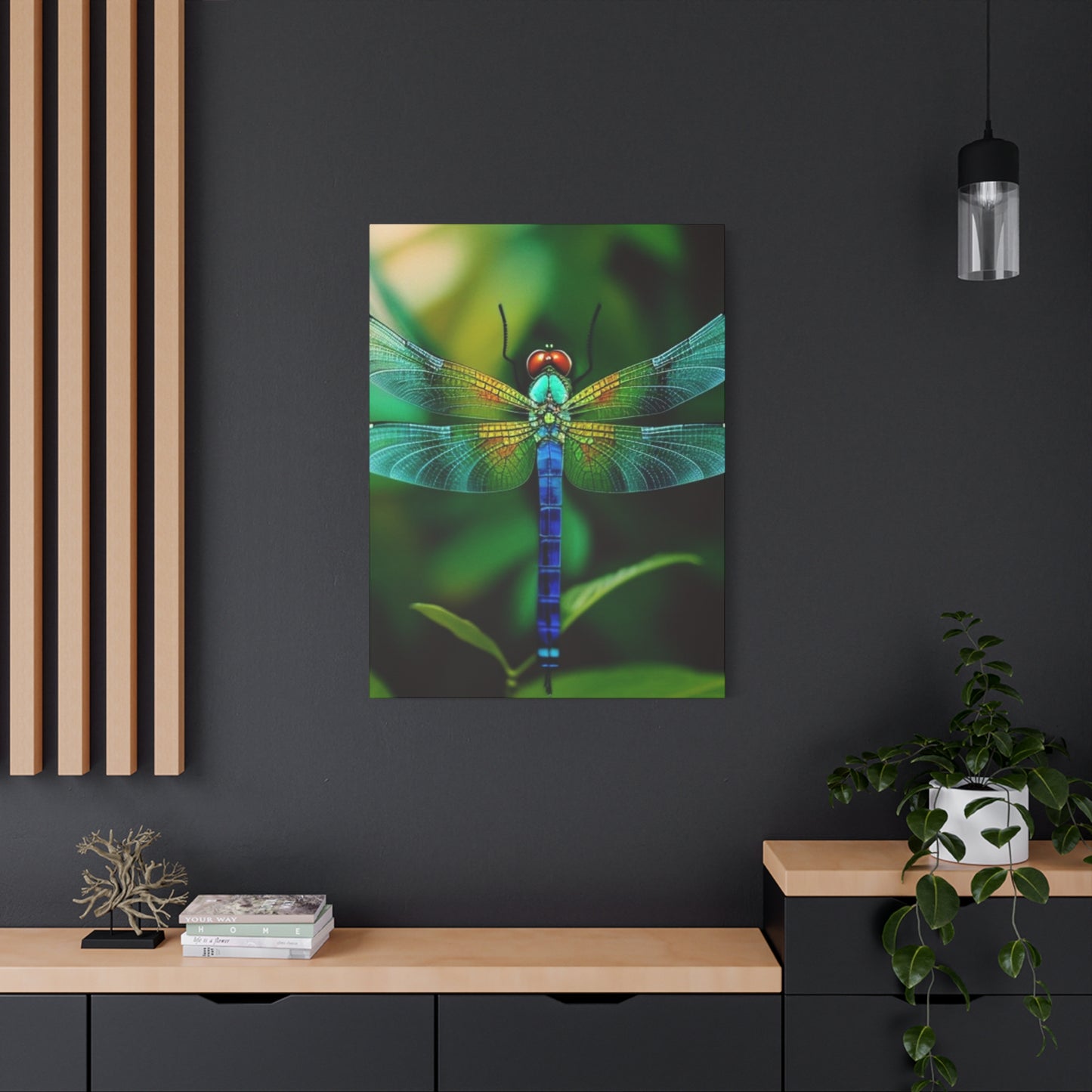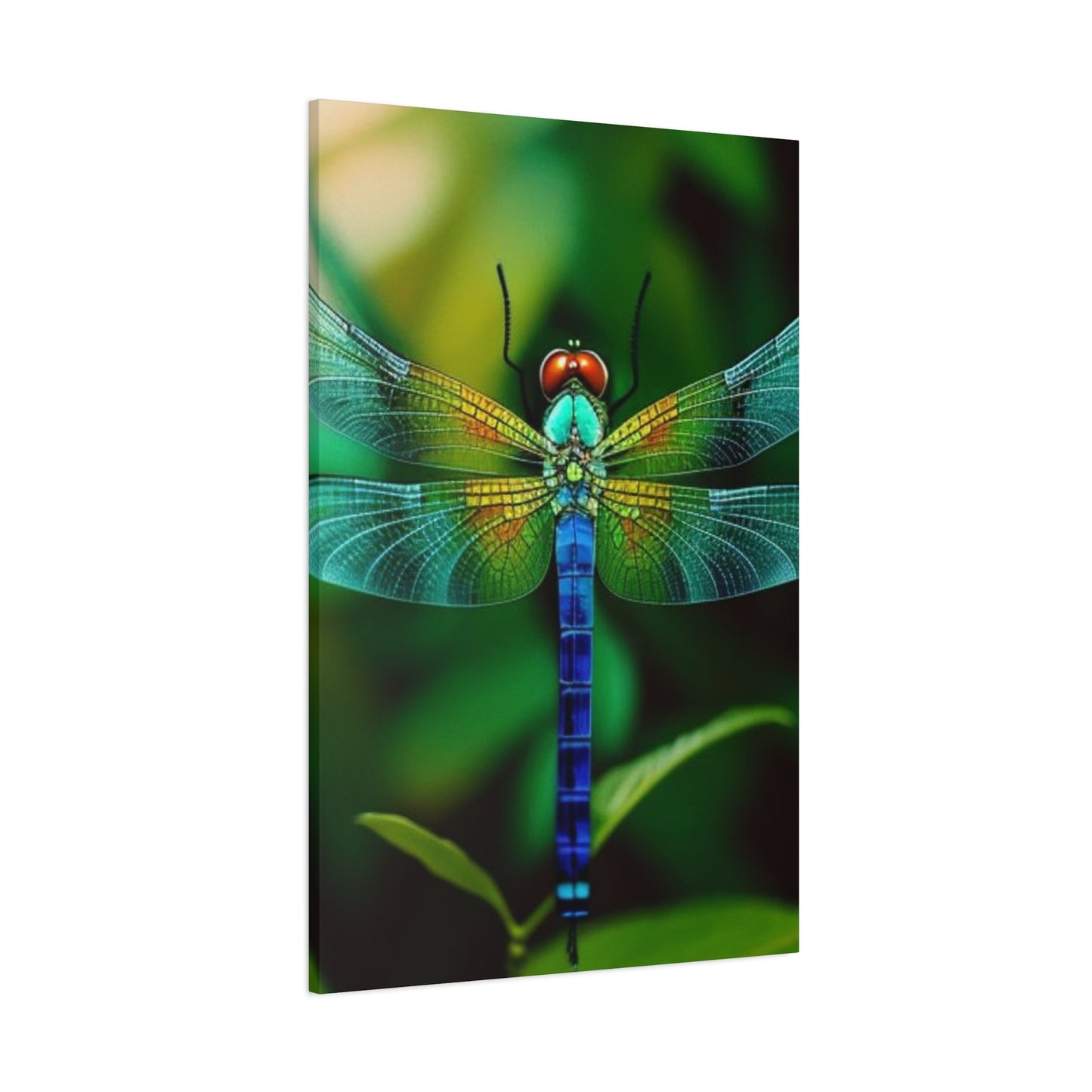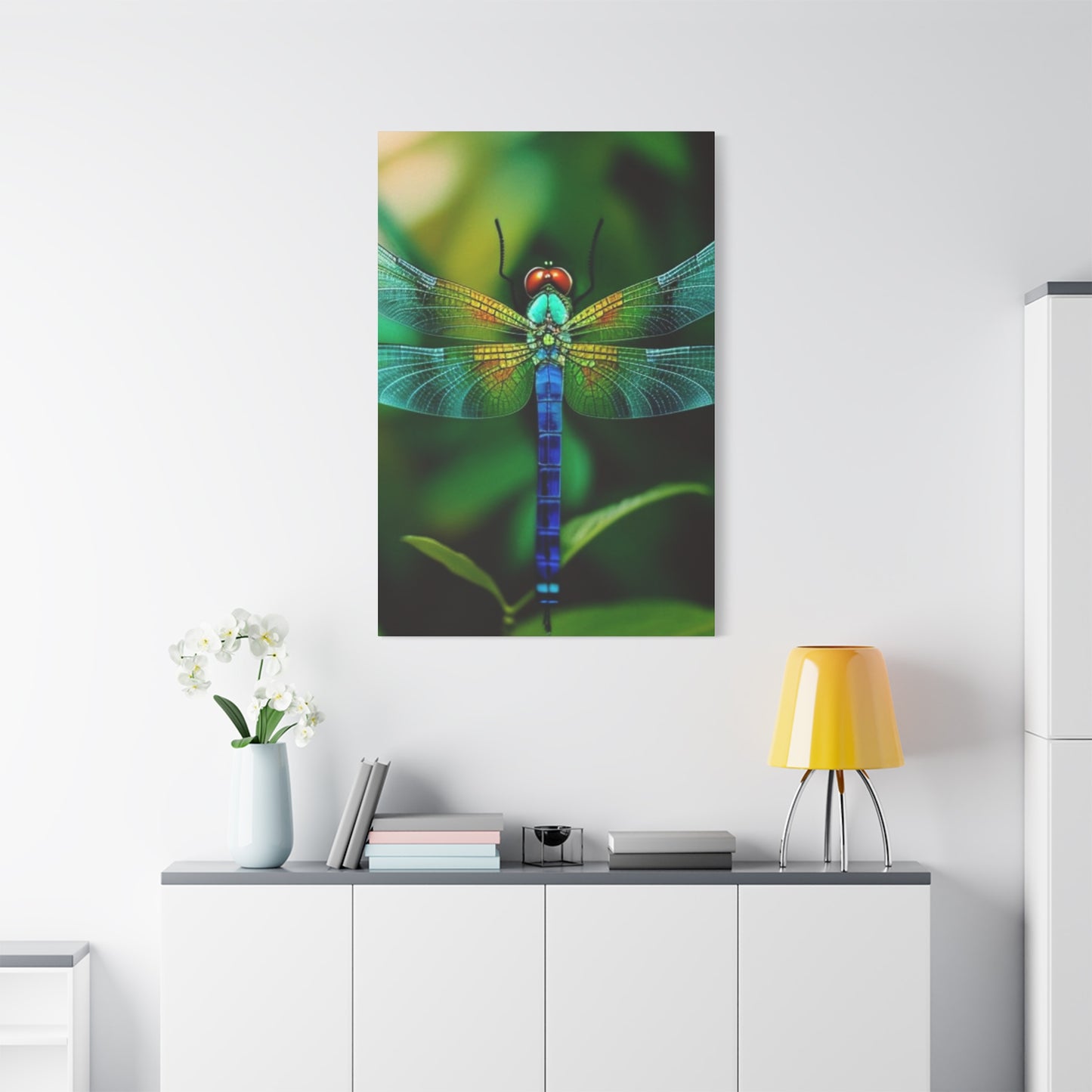Dragonfly Top Closeup Wall Art: Capturing Nature's Delicate Photography
The enchanting world of dragonflies has captivated artists, photographers, and nature enthusiasts for centuries. These remarkable creatures, with their iridescent wings and graceful flight patterns, represent some of nature's most extraordinary engineering marvels. When captured through the lens of skilled photographers and translated into stunning visual displays, dragonfly imagery transforms ordinary rooms into sanctuaries of natural beauty and tranquility.
Dragonfly top closeup wall art has emerged as one of the most sought-after categories in contemporary home decoration, offering viewers an intimate glimpse into the intricate details of these fascinating insects. The appeal lies not only in their aesthetic beauty but also in the profound symbolism they carry across different cultures and artistic traditions. From ancient Japanese paintings to modern photographic prints, dragonflies have consistently represented transformation, adaptability, and the delicate balance between strength and grace.
The growing popularity of nature-inspired artwork reflects our innate desire to reconnect with the natural world, especially in increasingly urbanized environments. Dragonfly closeup prints serve as windows to the outdoors, bringing the serenity and wonder of natural habitats into our living environments. These artistic pieces offer more than mere decoration; they provide a daily reminder of nature's incredible artistry and the importance of preserving our natural heritage for future generations.
Professional photographers and artists who specialize in dragonfly imagery often spend countless hours in wetlands, gardens, and natural preserves, waiting for the perfect moment to capture these elusive subjects. The resulting photographs reveal details invisible to the casual observer: the intricate vein patterns in gossamer wings, the compound structure of multifaceted eyes, and the subtle color variations that make each specimen unique. When these images are transformed into high-quality wall art, they become powerful conversation pieces that educate and inspire viewers about the remarkable diversity of our natural world.
The technical aspects of creating exceptional dragonfly closeup art require a deep understanding of both photography and the behavior patterns of these incredible insects. Successful dragonfly photographers must master specialized techniques including macro photography, lighting control, and precise timing to capture their subjects in optimal conditions. The resulting images often reveal a world of extraordinary detail and beauty that exists just beyond the reach of normal human vision, making each piece of dragonfly wall art a testament to both artistic skill and scientific observation.
Symbolic Meanings and Cultural Significance of Dragonflies in Artistic Expression
Throughout human history, dragonflies have held special significance in numerous cultures around the world, each attributing unique meanings and powers to these remarkable creatures. In Japanese culture, dragonflies symbolize courage, strength, and happiness, often appearing in traditional artwork and literature as harbingers of good fortune. The samurai class particularly revered dragonflies, viewing them as symbols of agility and victory in battle, qualities that warriors aspired to embody in their own lives.
Native American traditions regard dragonflies as messengers of wisdom and enlightenment, believing these creatures possess the ability to see beyond illusion and reveal deeper truths. Many tribes consider dragonfly sightings as signs of renewal and positive change, making dragonfly artwork particularly meaningful for those undergoing personal transformations or seeking spiritual guidance. The Cherokee people specifically associate dragonflies with pure water and healing, viewing their presence as an indication of environmental health and spiritual cleansing.
European folklore presents dragonflies as symbols of transformation and self-realization, drawing parallels between their metamorphosis from aquatic nymphs to aerial adults and human spiritual evolution. Medieval European cultures sometimes viewed dragonflies with suspicion, associating them with supernatural powers and otherworldly influence. However, modern European artistic traditions have embraced dragonflies as representations of freedom, lightness, and the ephemeral beauty of life, themes that resonate deeply with contemporary viewers seeking meaning and inspiration in their surroundings.
Celtic mythology connects dragonflies to the realm of fairies and magical transformation, believing these creatures serve as bridges between the physical and spiritual worlds. Irish and Scottish traditions often depict dragonflies as guardians of sacred places, particularly those associated with water sources and natural healing. This mystical association has influenced contemporary Celtic-inspired artwork, where dragonflies appear as symbols of protection and spiritual guidance.
In Chinese culture, dragonflies represent prosperity, harmony, and good luck, particularly in matters of love and relationships. Traditional Chinese paintings often feature dragonflies alongside lotus flowers and other aquatic plants, creating compositions that celebrate the interconnectedness of all living things. The Chinese philosophy of feng shui considers dragonfly imagery beneficial for creating positive energy flow and promoting emotional well-being within living environments.
Modern psychological interpretations of dragonfly symbolism focus on themes of adaptability, resilience, and personal growth. Mental health professionals often recommend nature-inspired artwork, including dragonfly prints, as tools for promoting relaxation and emotional healing. The graceful movement and delicate beauty of dragonflies can serve as metaphors for overcoming life's challenges while maintaining dignity and grace, making dragonfly wall art particularly appealing to individuals seeking visual reminders of their own inner strength and potential for transformation.
Professional Framing Techniques for Dragonfly Photography Prints
The presentation of dragonfly closeup prints through professional framing significantly impacts their visual impact and longevity. Quality framing protects valuable photographic prints from environmental damage while enhancing their aesthetic appeal and ensuring they complement existing room aesthetics. Professional framers understand the specific requirements for preserving photographic materials and can recommend appropriate combinations of matting, glazing, and frame styles that maximize the impact of dragonfly imagery.
Archival matting materials play a crucial role in preserving photographic prints over time, preventing acidic compounds from causing discoloration or deterioration. Museum-quality mat boards made from cotton fiber or purified wood pulp provide the necessary protection while offering a range of color options that can enhance or complement the natural colors present in dragonfly photographs. The choice of mat color should consider both the dominant colors in the image and the overall color scheme of the intended display location.
Conservation glazing options include regular glass, museum glass, and acrylic alternatives, each offering different levels of protection and visual clarity. Museum glass provides superior UV protection and virtually eliminates reflections, making it ideal for displaying valuable photographic prints in areas with significant natural light exposure. Anti-reflective coatings ensure that viewers can appreciate the fine details of dragonfly closeups without interference from reflected light sources, particularly important for images featuring subtle color variations and intricate wing patterns.
Frame selection should complement both the photograph and the surrounding environment without overwhelming the delicate beauty of dragonfly imagery. Simple, elegant frame profiles often work best with nature photography, allowing the natural beauty of the subject to remain the focal point. Natural wood finishes can create harmonious connections with outdoor themes, while sleek metal frames offer contemporary appeal that suits modern decorating styles.
Professional mounting techniques ensure that photographic prints remain flat and properly positioned within their frames while allowing for natural expansion and contraction due to environmental changes. Proper spacing between the print and glazing prevents moisture condensation and physical contact that could damage the photographic surface over time. Conservation mounting methods avoid adhesives that could cause staining or permanent damage to valuable prints.
Custom framing allows for creative presentation options including multiple image displays, varied mat configurations, and unique frame combinations that can transform individual dragonfly photographs into impressive wall installations. Gallery-style presentations with matching frames and coordinated matting create cohesive displays that can serve as focal points in larger rooms or complementary accents in smaller areas.
Enhancing Room Aesthetics with Dragonfly Artistic Displays
The strategic placement of dragonfly closeup art can dramatically transform the atmosphere and energy of any room, creating focal points that draw attention while promoting feelings of tranquility and connection to nature. Understanding the principles of visual balance and color harmony helps ensure that dragonfly artwork enhances rather than overwhelms existing decorative elements, creating harmonious environments that feel both sophisticated and naturally inspired.
Living room installations benefit from larger dragonfly prints or carefully arranged groupings that can serve as conversation starters and artistic centerpieces. The natural colors found in dragonfly photography often complement earth-tone furniture and natural fiber textiles, creating cohesive decorating schemes that feel both contemporary and timeless. Positioning dragonfly art at eye level ensures optimal viewing while allowing the intricate details of closeup photography to be appreciated by seated and standing viewers alike.
Bedroom environments gain serenity and peaceful energy from dragonfly imagery, particularly when displayed in softer lighting conditions that highlight the delicate beauty of these creatures without creating overstimulation. The transformational symbolism associated with dragonflies makes them particularly appropriate for bedrooms, where rest and renewal naturally occur. Smaller prints arranged in intimate groupings can create personal sanctuaries that promote relaxation and positive dreams.
Bathroom installations require careful consideration of humidity and moisture levels, making proper framing and protective glazing essential for preserving photographic prints in these challenging environments. The association between dragonflies and water makes them thematically appropriate for bathroom displays, where their presence can enhance the natural cleansing rituals that occur in these private retreats. Sealed frames and moisture-resistant mounting materials ensure that valuable prints remain protected while adding natural beauty to functional areas.
Office environments benefit from the calming influence of nature imagery, with dragonfly prints providing visual relief from the stresses of professional life. The symbolism of transformation and adaptability associated with dragonflies can serve as daily reminders of personal growth and professional development goals. Strategic placement near work areas can provide visual breaks that help reduce eye strain and mental fatigue during intense focus periods.
Hallway and transitional areas offer excellent opportunities for displaying series of related dragonfly images that create visual narratives as viewers move through different areas. Gallery-style arrangements with consistent framing and spacing create professional-looking installations that add sophistication to often-overlooked areas. The movement associated with dragonfly imagery complements the transitional nature of these connecting passages.
Contrasting Realistic Photography with Artistic Interpretations
The world of dragonfly closeup art encompasses a broad spectrum of approaches, from scientifically accurate photographic documentation to highly stylized artistic interpretations that emphasize emotional impact over literal representation. Understanding these different approaches helps art enthusiasts make informed choices about which styles best suit their personal preferences and decorating goals, ensuring that selected pieces will provide lasting satisfaction and visual appeal.
Scientific macro photography focuses on documenting the precise anatomical details of dragonfly specimens, often revealing structures and patterns invisible to casual observation. These highly detailed images serve educational purposes while providing stunning visual experiences that showcase the remarkable engineering found in nature. Professional nature photographers using specialized macro lenses can capture details such as individual wing scales, compound eye facets, and intricate body segmentation that demonstrate the incredible complexity of these seemingly simple creatures.
Fine art photography approaches dragonfly subjects with emphasis on composition, lighting, and emotional impact rather than strictly scientific documentation. Artistic photographers may use selective focus, creative lighting, or post-processing techniques to enhance the aesthetic appeal of their images while maintaining recognizable dragonfly characteristics. These interpretative approaches often result in more dramatic and emotionally engaging images that function effectively as decorative artwork.
Digital art interpretations allow artists to explore dragonfly themes through various creative techniques including digital painting, photo manipulation, and mixed media approaches. These methods can produce highly stylized results that emphasize particular aspects of dragonfly beauty while departing significantly from photographic realism. Digital artists can experiment with color enhancement, surreal backgrounds, and imaginative compositions that would be impossible to achieve through traditional photography alone.
Traditional painting and drawing techniques continue to offer unique approaches to dragonfly art, with artists using watercolors, oils, pastels, and graphite to create interpretations that emphasize particular aesthetic qualities. Hand-created artwork often possesses textural qualities and personal touches that distinguish it from photographic reproductions, appealing to collectors who value the direct connection between artist and subject matter.
Abstract interpretations focus on capturing the essence or feeling of dragonflies rather than their literal appearance, using color, form, and composition to evoke emotional responses associated with these creatures. Abstract dragonfly art can incorporate symbolic elements and creative compositions that suggest movement, transformation, or spiritual significance without relying on realistic representation.
Mixed media approaches combine various artistic techniques and materials to create unique interpretations that may incorporate photographic elements alongside painted, drawn, or collaged components. These experimental approaches often result in distinctive pieces that offer fresh perspectives on familiar subjects while maintaining recognizable dragonfly characteristics that connect with viewers' natural appreciation for these remarkable creatures.
Creative DIY Projects for Dragonfly-Themed Artwork
Creating personalized dragonfly top view wall art through do-it-yourself projects offers crafting enthusiasts the opportunity to develop unique pieces that reflect individual tastes while developing new artistic skills. DIY approaches range from simple photography projects to complex mixed-media creations, accommodating various skill levels and creative interests while providing satisfying hands-on experiences that result in meaningful decorative pieces.
Photography-based DIY projects begin with learning macro photography techniques that enable amateur photographers to capture high-quality closeup images of dragonflies in their natural habitats. Essential equipment includes a camera with macro capabilities, tripod for stability, and patience for waiting for optimal shooting conditions. Local parks, botanical gardens, and wetland areas provide excellent locations for finding cooperative dragonfly subjects, particularly during early morning hours when these insects are less active and more approachable.
Digital processing skills enhance DIY photography projects by allowing creators to optimize their captured images through color correction, contrast adjustment, and creative filtering techniques. Free and commercial photo editing software provides tools for enhancing dragonfly photographs while maintaining natural appearance or creating more artistic interpretations. Learning basic digital darkroom techniques enables DIY enthusiasts to transform ordinary snapshots into gallery-worthy prints suitable for professional presentation.
Canvas painting projects allow crafters to create original dragonfly artwork using acrylic or oil paints, with various techniques accommodating different skill levels. Beginners might start with simplified dragonfly silhouettes using stencils or templates, while more experienced painters can attempt detailed realistic representations or impressionistic interpretations. Online tutorials and local art classes provide instruction in specific techniques for painting insects and achieving realistic textures and colors.
Mixed media collage projects combine various materials including fabric, paper, natural elements, and found objects to create dimensional dragonfly artwork with unique textures and visual interest. These projects encourage creative experimentation while recycling materials that might otherwise be discarded, resulting in environmentally conscious artwork with personal significance. Botanical elements such as pressed flowers and leaves can enhance dragonfly collages with authentic natural components.
Printmaking techniques including block printing, screen printing, and etching offer traditional approaches to creating multiple copies of dragonfly designs while developing valuable artistic skills. These methods require initial investments in tools and materials but provide the satisfaction of creating original prints through time-tested techniques. Printmaking workshops and community art centers often provide access to specialized equipment and expert instruction for beginners interested in exploring these traditional artistic methods.
Digital art creation using tablets and styluses enables contemporary DIY artists to create sophisticated dragonfly artwork using modern technology and software applications. These tools provide unprecedented flexibility for experimenting with colors, textures, and compositions while maintaining the ability to easily revise and refine artistic creations. Digital artwork can be printed on various materials including canvas, metal, and specialty papers to create professional-quality finished pieces suitable for gallery presentation.
Natural Theme Integration in Dragonfly Photography Collections
Successfully incorporating dragonfly closeup prints into broader nature-themed decorating schemes requires understanding how these images interact with other natural elements and botanical artwork to create cohesive and visually appealing environments. Dragonflies naturally complement aquatic and wetland themes while also harmonizing with garden and forest motifs, providing versatile decorating options that celebrate the interconnectedness of natural ecosystems.
Aquatic theme integration emphasizes the connection between dragonflies and their water-dependent life cycles, pairing dragonfly artwork with images of ponds, streams, and wetland landscapes. Water lily photographs, cattail studies, and reflective water surfaces create natural partnerships with dragonfly closeups, establishing visual narratives that tell the story of wetland ecosystems. Color palettes featuring blues, greens, and earth tones unify these related themes while maintaining visual interest through varied textures and compositional approaches.
Garden theme collections can incorporate dragonfly art alongside botanical photography featuring flowers, leaves, and garden landscapes that represent the terrestrial hunting grounds where adult dragonflies pursue their insect prey. Rose garden scenes, wildflower meadows, and herb garden studies complement dragonfly imagery while creating decorating schemes that celebrate cultivated and wild natural beauty. These combinations work particularly well in sunrooms, conservatories, and garden-adjacent living areas.
Seasonal progression themes use dragonfly imagery to represent specific times of year, particularly spring and summer when these insects are most active and visible. Spring themes might pair emerging dragonfly photographs with early wildflowers and fresh green foliage, while summer collections could feature mature dragonflies alongside peak bloom flowers and lush vegetation. These seasonal approaches allow for rotating displays that maintain fresh visual interest throughout the year.
Microscopic detail themes focus on the intricate structures revealed through macro photography, pairing extreme closeups of dragonfly anatomy with similar detailed studies of plant structures, butterfly wings, and other natural subjects. These collections appeal to viewers interested in the hidden complexity of natural forms and the remarkable engineering found throughout nature. Scientific accuracy and educational value enhance the appeal of these detail-oriented displays.
Habitat ecosystem themes present dragonflies within the context of their complete environmental communities, including the plants, other insects, and landscape features that comprise their natural homes. Wetland ecosystem displays might combine dragonfly art with photographs of herons, frogs, cattails, and water surfaces to create comprehensive environmental portraits. These thematic approaches educate viewers about ecological relationships while providing visually rich decorating schemes.
Color-coordinated natural themes organize artwork based on dominant colors rather than specific subjects, allowing dragonfly prints to integrate with diverse natural imagery that shares similar color palettes. Monochromatic schemes using various shades of green, blue, or brown create sophisticated displays that emphasize form and composition over literal subject matter, appealing to viewers who prefer subtle and harmonious decorating approaches.
Sizing Considerations for Maximum Visual Impact
The dimensions of dragonfly closeup artwork significantly influence its visual impact and effectiveness within different room configurations, making size selection a crucial consideration for achieving desired decorating outcomes. Large-scale prints command attention and create dramatic focal points, while smaller pieces offer intimate viewing experiences and flexible arrangement options that suit various decorating needs and spatial constraints.
Large format dragonfly prints, typically measuring 24 inches or greater in their longest dimension, create commanding presence that can anchor entire room designs while showcasing the incredible detail possible in macro photography. These substantial pieces work best in rooms with adequate wall areas and viewing distances that allow observers to appreciate both the overall composition and fine details without overwhelming the available visual real estate. Living rooms, offices, and hallways often provide ideal locations for large dragonfly artwork that can serve as conversation pieces and artistic centerpieces.
Medium-sized prints, ranging from approximately 12 to 24 inches, offer versatile decorating options that work well individually or in coordinated groupings. These dimensions provide sufficient detail visibility while maintaining manageable proportions that suit most room configurations and furniture arrangements. Medium prints adapt well to changing decorating schemes and can be relocated easily when room functions or aesthetic preferences evolve over time.
Small format dragonfly closeups, typically under 12 inches in their largest dimension, excel in intimate settings and grouped arrangements that create visual impact through repetition and variation. These compact pieces work exceptionally well in bathrooms, bedrooms, and other personal areas where close viewing distances enhance detail appreciation. Small prints also offer budget-friendly options for collectors beginning their dragonfly art acquisitions or those seeking to experiment with nature-themed decorating approaches.
Gallery wall arrangements combine multiple dragonfly prints of various sizes to create impressive installations that provide more visual impact than individual pieces alone. Successful gallery walls require careful planning regarding spacing, alignment, and size progression to maintain visual balance while accommodating the unique characteristics of each individual print. Professional matting and framing consistency helps unify diverse sizes within coherent presentations.
Proportion relationships between artwork and furniture require consideration to ensure that dragonfly prints complement rather than compete with other room elements. Wall art should generally relate proportionally to nearby furniture pieces, with larger prints pairing well with substantial furniture and smaller pieces complementing more delicate or minimal furnishing approaches. The rule of thirds suggests that artwork width should approximate two-thirds of the furniture width beneath it for optimal visual balance.
Viewing distance calculations help determine appropriate print sizes for specific installation locations, ensuring that observers can appreciate fine details without strain while maintaining comfortable spatial relationships within room layouts. Closeup photography benefits from viewing distances that allow detail examination without requiring uncomfortably close proximity to wall surfaces, making size selection critical for optimizing the viewing experience.
Mastering Lighting Techniques in Dragonfly Photography
Professional dragonfly photography requires sophisticated understanding of lighting principles and techniques that reveal the intricate details and natural beauty of these remarkable subjects while creating compelling artistic compositions. The transparent and reflective qualities of dragonfly wings present unique photographic challenges that demand specialized approaches to illumination and exposure control for optimal results.
Natural lighting conditions provide the foundation for most successful dragonfly photography, with specific times of day and weather conditions offering distinct advantages for different photographic goals. Early morning hours, often called the "golden hour," provide warm, soft light that enhances the natural colors of dragonfly subjects while reducing harsh shadows that can obscure important details. The cooler temperatures during morning hours also make dragonflies less active and more cooperative for closeup photography sessions.
Overcast conditions create natural diffusion that eliminates harsh shadows while providing even illumination ideal for documenting fine anatomical details without extreme contrast. Cloudy skies function as enormous softboxes, creating gentle light that reveals subtle color variations and textural elements that might be lost under direct sunlight. These conditions particularly benefit macro photographers seeking to capture the intricate vein patterns in dragonfly wings and the complex structure of compound eyes.
Artificial lighting techniques supplement natural illumination when environmental conditions prove inadequate or when specific creative effects are desired. Ring flash units provide even, shadowless illumination ideal for scientific documentation, while directional flash units can create dramatic lighting effects that emphasize three-dimensional form and texture. Diffusion materials including softboxes, umbrellas, and reflectors help control artificial light quality for more natural-looking results.
Backlighting techniques create striking silhouette effects that emphasize the graceful forms of dragonfly subjects while highlighting the transparent qualities of their wings. Positioning light sources behind dragonfly subjects transforms wings into luminous screens that glow with transmitted light, creating ethereal effects that emphasize the delicate beauty of these creatures. Careful exposure control prevents overexposure while maintaining adequate detail in backlit subjects.
Reflector usage bounces natural or artificial light into shadow areas, reducing contrast while maintaining natural lighting character. White reflectors provide neutral fill light, while gold reflectors add warming effects that can enhance the natural colors of dragonfly subjects. Silver reflectors offer efficient light reflection with slight cooling effects that can be beneficial under warm lighting conditions.
Light direction considerations affect both the technical quality and artistic impact of dragonfly photographs, with side lighting revealing texture and form while front lighting provides even illumination for documentation purposes. Top lighting can create interesting shadow patterns while emphasizing the dimensional qualities of dragonfly anatomy. Experimentation with various lighting angles reveals the full range of creative possibilities available to dedicated dragonfly photographers.
Harmonizing Dragonfly Art with Natural Decorating Elements
The successful integration of dragonfly closeup wall art with natural decorating materials and organic design elements creates harmonious environments that celebrate the beauty and tranquility of the natural world. Understanding how dragonfly imagery interacts with various natural materials, colors, and textures ensures that these artistic pieces enhance rather than compete with existing decorative elements for maximum aesthetic impact.
Natural wood furniture provides ideal companionship for dragonfly artwork, with the organic grain patterns and warm tones of various wood species complementing the earth-connected themes inherent in nature photography. Light woods such as birch, maple, and pine offer neutral backgrounds that allow dragonfly colors to remain prominent, while darker woods like walnut and cherry create rich contrasts that can make lighter dragonfly subjects appear more luminous and eye-catching.
Stone and mineral elements including marble, granite, slate, and decorative river rocks echo the natural habitats where dragonflies thrive while adding textural variety to decorating schemes. The cool colors and smooth surfaces of polished stones contrast beautifully with the delicate forms and iridescent colors typical of dragonfly photography, creating balanced compositions that feel both sophisticated and naturally grounded.
Living plant arrangements create obvious thematic connections with dragonfly art while adding fresh colors, natural fragrances, and seasonal variety to decorating schemes. Aquatic plants such as water lilies, cattails, and lotus flowers reference the wetland environments where dragonflies complete their life cycles, while flowering plants attract the insects that serve as dragonfly prey, creating authentic ecological connections within home environments.
Natural fiber textiles including cotton, linen, wool, and silk provide organic textures and colors that complement dragonfly themes without competing for visual attention. Earth-tone fabrics in beiges, greens, and browns create neutral foundations that allow dragonfly art to serve as colorful focal points, while textured weaves add subtle visual interest that enhances overall environmental richness.
Water features including fountains, aquariums, and decorative bowls create both visual and auditory connections to the aquatic environments essential to dragonfly life cycles. The sound of moving water adds sensory dimensions to dragonfly-themed rooms while creating peaceful atmospheres that enhance relaxation and contemplation. The reflective qualities of water surfaces can create interesting lighting effects that complement photographic artwork.
Natural lighting enhancement through window treatments and artificial lighting choices affects how dragonfly art appears throughout different times of day and various weather conditions. Sheer curtains and light-filtering shades maintain connections to outdoor environments while providing gentle illumination that reveals the subtle details and colors in dragonfly photography without creating harsh glare or reflection problems that interfere with optimal viewing.
Preservation and Care Guidelines for Canvas Prints
Proper maintenance and preservation techniques significantly extend the lifespan of dragonfly canvas prints while maintaining their visual quality and investment value over time. Canvas prints require specific care approaches that differ from traditional paper-based photography, with attention to environmental factors, handling procedures, and cleaning methods that protect these valuable decorative investments from premature deterioration or damage.
Environmental control represents the most critical factor in preserving canvas prints, with temperature and humidity stability preventing the expansion and contraction cycles that can cause canvas distortion and paint layer cracking. Ideal storage and display conditions maintain temperatures between 65-75 degrees Fahrenheit with relative humidity levels between 45-55 percent, avoiding the extreme fluctuations that occur near heating vents, air conditioning units, and exterior walls exposed to weather variations.
UV light protection prevents the fading and color shifts that can dramatically alter the appearance of dragonfly prints over time, particularly those featuring delicate colors and subtle tonal variations typical of macro nature photography. UV-filtering glazing, window films, and strategic positioning away from direct sunlight exposure help preserve original colors while maintaining the ability to enjoy natural lighting that enhances viewing pleasure without causing damage.
Dust accumulation poses ongoing challenges for canvas prints, requiring regular but gentle cleaning procedures that remove contaminants without damaging delicate surface textures or print layers. Soft-bristled brushes, microfiber cloths, and low-suction vacuum cleaners with brush attachments provide safe cleaning options when used with appropriate techniques that avoid excessive pressure or abrasive contact with canvas surfaces.
Handling procedures minimize physical damage risks during cleaning, moving, or repositioning activities, with proper support techniques preventing stress concentrations that could cause canvas tearing or frame separation. Two-person lifting for larger pieces distributes weight evenly while avoiding pressure points that could damage mounting systems or canvas attachment points.
Storage requirements for canvas prints not currently displayed include flat positioning, protective covering, and climate-controlled environments that prevent moisture accumulation, insect infestation, and mechanical damage. Acid-free tissue paper and archival storage boxes provide protection during transportation and temporary storage periods while maintaining the accessibility needed for seasonal display rotations.
Professional restoration services become necessary when canvas prints suffer damage from accidents, environmental exposure, or normal aging processes that exceed the scope of routine maintenance procedures. Qualified conservation specialists possess the expertise and materials needed to repair tears, restore faded areas, and address structural problems while maintaining the artistic integrity and value of damaged pieces.
Building Emotional Connections Through Dragonfly Imagery
The psychological and emotional impacts of dragonfly closeup art extend far beyond simple aesthetic appreciation, creating meaningful connections between viewers and the natural world while promoting feelings of peace, wonder, and spiritual connection. Understanding these deeper responses helps explain why dragonfly imagery resonates so strongly with diverse audiences and provides lasting satisfaction that transcends changing decorating trends.
Biophilia, the innate human affinity for natural elements and living systems, creates instinctive positive responses to dragonfly imagery that connect with our evolutionary heritage and deep-seated needs for natural beauty. Scientific research demonstrates that exposure to nature imagery, including detailed photographs of insects and other wildlife, can reduce stress levels, lower blood pressure, and improve overall emotional well-being, making dragonfly art both decoratively appealing and psychologically beneficial.
Meditation and mindfulness practices often incorporate nature imagery as focal points for contemplation and relaxation exercises, with the intricate details and peaceful associations of dragonfly photographs providing excellent subjects for these therapeutic activities. The repetitive patterns found in dragonfly wing structures and the graceful forms of these creatures naturally draw attention and encourage the focused awareness that supports mindful observation and stress reduction.
Childhood memories and associations frequently include encounters with dragonflies in outdoor settings such as ponds, gardens, and summer camps, creating nostalgic connections that make dragonfly art emotionally resonant for viewers seeking to recapture feelings of wonder and discovery associated with youthful exploration of natural environments. These personal associations enhance the meaning and significance of dragonfly artwork beyond its immediate visual appeal.
Spiritual and metaphysical interpretations of dragonfly symbolism create additional layers of meaning for viewers drawn to themes of transformation, enlightenment, and connection to higher consciousness. Many people find comfort and inspiration in the transformational life cycle of dragonflies, viewing these creatures as symbols of personal growth and spiritual evolution that provide encouragement during challenging life transitions.
Seasonal affective responses to dragonfly imagery can provide psychological benefits during winter months when direct contact with nature becomes limited, particularly in climates with extended cold seasons. Nature artwork serves as a visual reminder of warmer, more active times of year while maintaining connections to outdoor experiences that support mental health and emotional balance during darker periods.
Educational curiosity stimulated by detailed dragonfly photography can lead to increased interest in natural history, ecology, and environmental conservation, creating deeper appreciation for the complexity and beauty of natural systems. This enhanced awareness often translates into more conscious lifestyle choices and greater support for environmental protection efforts that benefit both dragonflies and their ecosystems.
Contemporary Styles in Dragonfly Closeup Artwork
The evolution of dragonfly closeup art reflects broader trends in contemporary photography and digital imaging while maintaining the timeless appeal of these fascinating subjects. Modern techniques and aesthetic approaches offer fresh perspectives on traditional nature photography while incorporating technological advances that expand creative possibilities for artists and photographers specializing in dragonfly imagery.
High-dynamic-range photography techniques capture the full range of tonal values present in dragonfly subjects, from the deepest shadows in wing recesses to the brightest highlights on reflective body surfaces. HDR processing reveals details that would be lost in conventional photography while creating surreal, hyper-realistic effects that emphasize the alien beauty of these remarkable creatures. These techniques particularly excel at documenting the complex textures and patterns found in dragonfly anatomy.
Focus stacking methods combine multiple images taken at different focal distances to create final photographs with extended depth of field that reveals sharp details throughout the entire dragonfly subject. This technique overcomes the shallow depth of field limitations inherent in macro photography while maintaining the magnification levels necessary for capturing fine anatomical details. The resulting images offer unprecedented clarity that reveals structures invisible in traditional single-exposure photographs.
Abstract interpretation approaches emphasize artistic expression over documentary accuracy, using selective focus, motion blur, multiple exposures, and creative processing to create impressionistic representations that capture the essence of dragonfly movement and grace. These artistic approaches appeal to viewers seeking unique decorative pieces that suggest rather than literally depict their natural subjects while maintaining recognizable dragonfly characteristics.
Monochromatic presentations strip away color information to focus attention on form, texture, and composition, creating sophisticated artwork that emphasizes the sculptural qualities of dragonfly anatomy. Black and white processing can reveal subtle details and tonal relationships that become obscured by color information while creating timeless imagery that transcends specific technological limitations or color reproduction issues.
Environmental context integration places dragonfly subjects within their natural habitats while maintaining the detail and impact characteristic of closeup photography. These approaches balance intimate subject documentation with broader ecological storytelling, creating artwork that educates viewers about dragonfly behavior and habitat requirements while providing visually compelling decorative pieces.
Digital enhancement techniques allow contemporary artists to push beyond the limitations of traditional photography while maintaining photographic foundations, using computational methods to increase resolution, enhance colors, reduce noise, and create artistic effects impossible through conventional optical methods alone. These technological approaches expand creative possibilities while maintaining the natural beauty that makes dragonfly imagery so appealing to diverse audiences.
Incorporating Metallic and Reflective Effects
The natural iridescence and reflective qualities inherent in dragonfly anatomy inspire artistic techniques that enhance these characteristics through specialized printing methods, metallic substrates, and creative processing approaches that amplify the otherworldly beauty of these remarkable subjects. Metallic effects in dragonfly art create dynamic presentations that change appearance based on viewing angle and lighting conditions, adding interactive elements that maintain viewer interest over time.
Metallic printing substrates including aluminum, brushed steel, and specialty metallic papers create stunning presentations that emphasize the natural reflective qualities found in dragonfly wings and bodies. These materials interact with light in ways that conventional paper prints cannot achieve, creating shifting highlights and color variations that mirror the natural optical effects visible in living dragonfly specimens. The durability of metallic substrates also provides superior longevity compared to traditional paper-based prints.
Iridescent enhancement techniques in digital processing can selectively intensify the natural color-shifting properties of dragonfly subjects while maintaining realistic appearance and avoiding over-manipulation that creates obviously artificial results. These subtle enhancements bring out details that might be visible only under optimal lighting conditions, making them accessible to viewers in typical home environments where dramatic lighting effects are not practical.
Holographic and lenticular printing methods create three-dimensional effects and animation illusions that suggest dragonfly movement and wing flutter, adding dynamic elements to static artwork that capture some of the kinetic energy associated with these active creatures. These specialized techniques produce unique artwork that cannot be replicated through conventional printing methods, appealing to collectors seeking distinctive pieces that stand out from traditional photographic reproductions.
Backlighting integration in framed presentations uses LED strips or other illumination systems to create glowing effects that emphasize the transparent qualities of dragonfly wings while adding dramatic visual impact suitable for focal point installations. These illuminated artworks function as both decorative pieces and functional lighting elements, providing ambient illumination that enhances room atmosphere while showcasing dragonfly beauty.
Reflective background integration uses mirrors, metallic surfaces, and other reflective materials to create complex layered presentations that suggest the water surface environments where dragonflies are commonly observed. These multi-dimensional approaches create depth and visual complexity that engages viewers from multiple angles while referencing the natural habitats associated with dragonfly life cycles.
Surface texture applications including embossing, raised printing, and mixed media additions create tactile elements that invite closer examination while adding sculptural qualities to traditionally flat photographic presentations. These dimensional approaches appeal to viewers who appreciate artwork that engages multiple senses while maintaining the visual impact characteristic of high-quality nature photography.
Thoughtful Gift Selection Guidelines
Dragonfly closeup wall art represents an excellent gift choice for nature enthusiasts, photography lovers, and individuals who appreciate meaningful artwork with symbolic significance. Selecting appropriate dragonfly art requires consideration of recipient preferences, decorating styles, and symbolic meanings that ensure gift selections provide lasting appreciation and personal relevance that extends beyond immediate visual appeal.
Personal interest assessment helps identify recipients who would genuinely appreciate dragonfly artwork based on their demonstrated preferences for nature themes, outdoor activities, or symbolic imagery related to transformation and personal growth. Gift-givers should consider whether potential recipients have expressed interest in macro photography, insect studies, or environmental conservation topics that create natural connections to dragonfly subjects.
Conclusion
Dragonfly top closeup wall art beautifully captures the intricate delicacy and natural elegance of one of nature’s most fascinating creatures. By focusing on the fine details—the iridescent wings, multifaceted eyes, and slender body—this type of art offers a unique perspective that magnifies the subtle beauty often overlooked in everyday life. Incorporating dragonfly closeup photography into your home décor invites a sense of calm, wonder, and connection to the natural world.
This style of wall art goes beyond simple decoration; it serves as a reminder of the importance of mindfulness and appreciating life’s small wonders. Dragonflies are often seen as symbols of transformation, adaptability, and lightness of being, qualities that resonate deeply in today’s fast-paced world. By surrounding yourself with such imagery, you create a space that encourages reflection, growth, and serenity.
From a design standpoint, dragonfly top closeup art fits effortlessly into a wide variety of décor styles. Whether your home embodies modern minimalism, rustic charm, or botanical themes, the organic shapes and shimmering textures of dragonflies add a versatile and elegant touch. Their subtle color variations—from soft blues and greens to iridescent purples—complement neutral tones and enliven more vibrant color schemes alike.
Moreover, the closeup photography style brings an artistic, almost abstract quality to the subject, transforming it into a captivating visual statement. This makes dragonfly wall art a perfect focal point for bedrooms, living rooms, offices, or creative spaces where inspiration and tranquility are desired.
In conclusion, dragonfly top closeup wall art is a timeless and elegant way to celebrate the delicate artistry of nature. It enhances your environment with both aesthetic beauty and meaningful symbolism, fostering a peaceful and inspiring atmosphere. Embrace this art form to bring a touch of natural grace and mindful reflection into your home, transforming ordinary walls into windows to the wonders of the natural world.

















